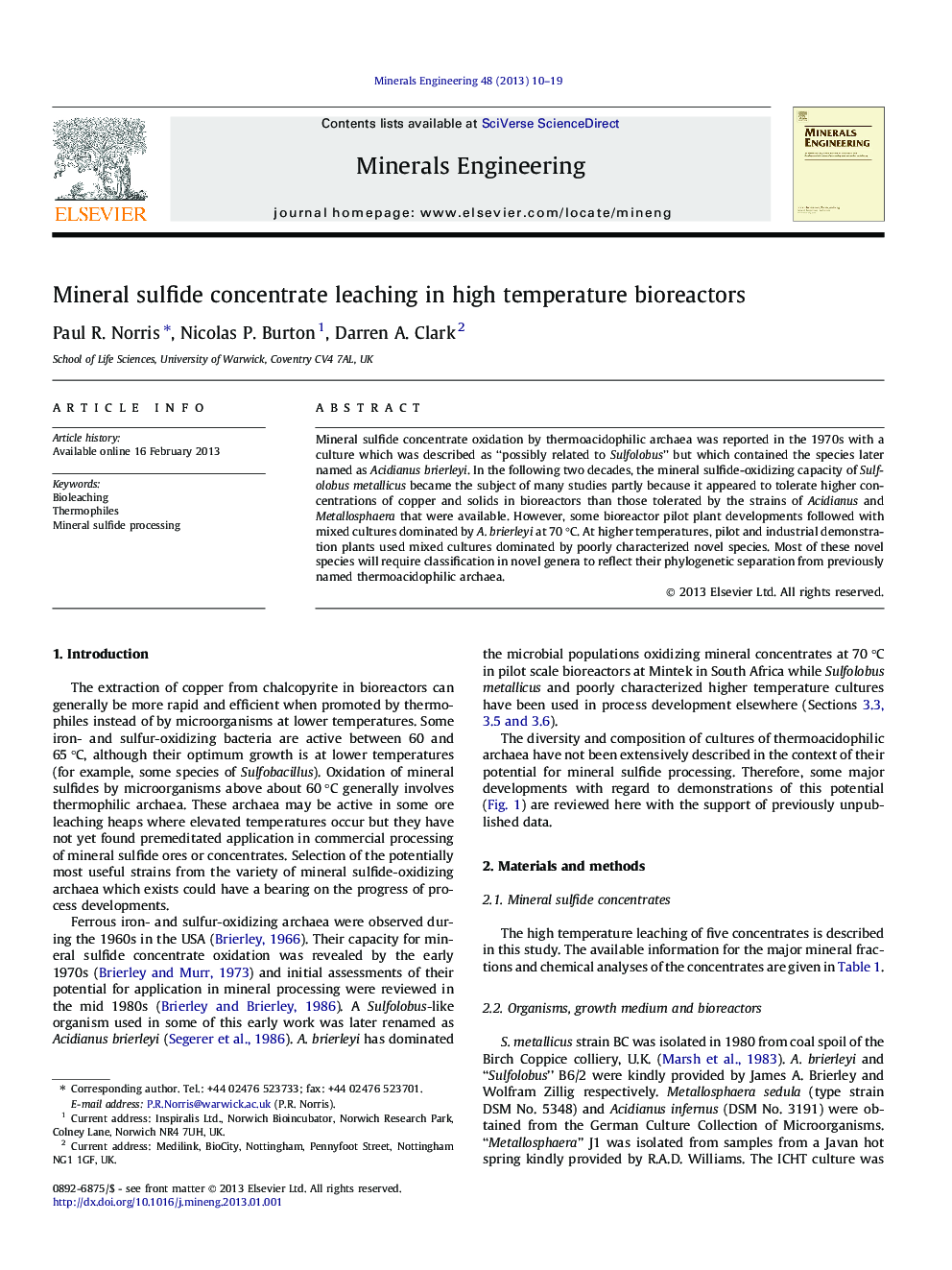| Article ID | Journal | Published Year | Pages | File Type |
|---|---|---|---|---|
| 233428 | Minerals Engineering | 2013 | 10 Pages |
Mineral sulfide concentrate oxidation by thermoacidophilic archaea was reported in the 1970s with a culture which was described as “possibly related to Sulfolobus” but which contained the species later named as Acidianus brierleyi. In the following two decades, the mineral sulfide-oxidizing capacity of Sulfolobus metallicus became the subject of many studies partly because it appeared to tolerate higher concentrations of copper and solids in bioreactors than those tolerated by the strains of Acidianus and Metallosphaera that were available. However, some bioreactor pilot plant developments followed with mixed cultures dominated by A. brierleyi at 70 °C. At higher temperatures, pilot and industrial demonstration plants used mixed cultures dominated by poorly characterized novel species. Most of these novel species will require classification in novel genera to reflect their phylogenetic separation from previously named thermoacidophilic archaea.
► The use of thermoacidophiles for bioreactor mineral sulfide processing is reviewed. ► S. metallicus Tolerated relatively high concentrations of copper and solids at 70 °C. ► The most efficient chalcopyrite processing occurred at high temperature (78 °C). ► The most active species revealed at 78 °C have not been characterized or classified.
